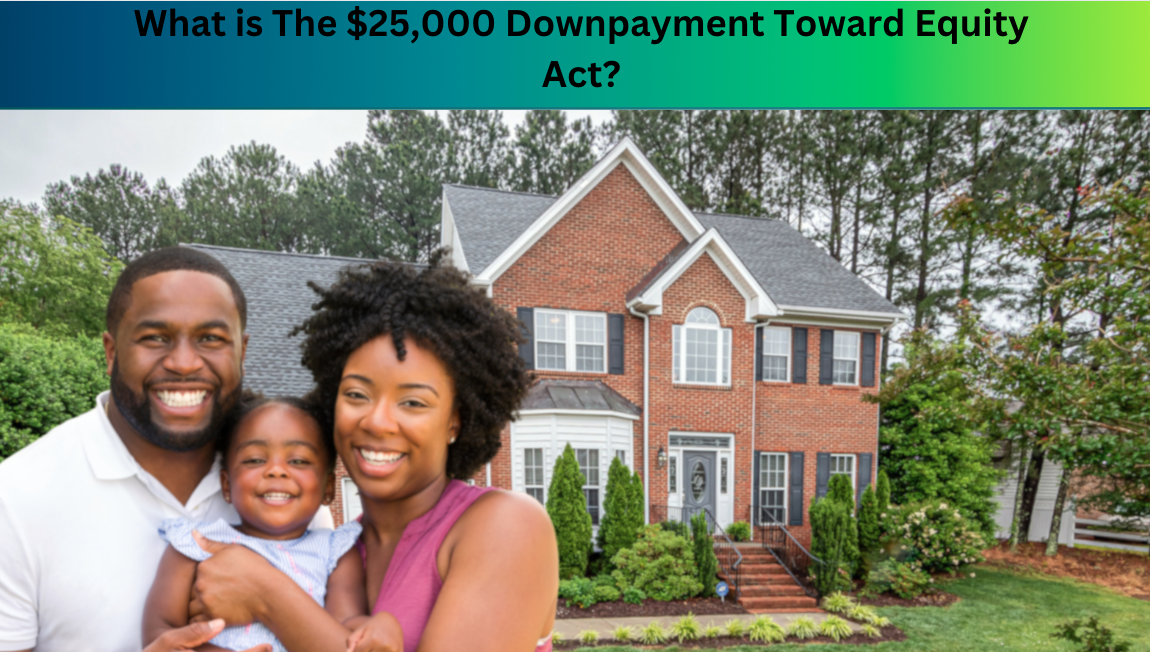$25000 First Time-Home Buyer Grant:
What is The $25,000 Downpayment Toward Equity Act?
In a concerted effort to address the longstanding disparities in homeownership between racial and ethnic groups, the U.S. government introduced the $25,000 Downpayment Toward Equity Act. This legislation, proposed as a means to bridge the racial homeownership gap, has ignited discussions about housing equity, financial accessibility, and the broader implications for the American dream.
Understanding the Racial Homeownership Gap
Before diving into the specifics of the Act, it’s crucial to understand the context. Homeownership has historically been a significant factor in wealth accumulation in the United States. However, this avenue to building wealth has not been equally accessible to everyone.
Studies have consistently shown that racial and ethnic minorities face higher barriers to homeownership compared to their white counterparts. Factors contributing to this disparity include discriminatory lending practices, lower household incomes, and limited access to generational wealth.
The $25,000 Downpayment Toward Equity Act: An Overview
Introduced with the goal of reducing the racial homeownership gap, the $25,000 Downpayment Toward Equity Act aims to provide financial assistance to eligible first-time homebuyers. Here’s a breakdown of its key components:
1. Downpayment Assistance
The Act proposes a one-time downpayment assistance of up to $25,000 for qualifying individuals or families. This financial support aims to alleviate the upfront costs associated with purchasing a home, thereby making homeownership more attainable for many who might otherwise be excluded.
2. Eligibility Criteria
While specific eligibility criteria may vary based on the final version of the legislation, initial proposals suggest targeting individuals or families below a certain income threshold and those who have not previously owned a home. Additionally, there may be provisions to prioritize applicants from historically marginalized communities.
3. Funding and Implementation
Funding for the program is expected to come from federal allocations, with potential partnerships with state and local governments and private sector stakeholders. The Act outlines a framework for the distribution of funds, oversight mechanisms, and reporting requirements to ensure transparency and accountability.
Implications and Considerations
The $25,000 Downpayment Toward Equity Act has sparked a range of reactions and discussions:
1. Economic Stimulus
Proponents argue that the Act could stimulate economic activity by boosting homeownership rates, which, in turn, can lead to increased consumer spending, job creation in related industries, and a stronger housing market.
2. Wealth Redistribution
By providing financial assistance specifically aimed at closing the racial homeownership gap, the Act represents a targeted approach to wealth redistribution. However, critics raise concerns about the potential unintended consequences and the need for broader systemic reforms.
3. Long-term Impact
While the Act addresses immediate financial barriers to homeownership, achieving true equity requires a multifaceted approach. This includes addressing systemic issues, investing in education and workforce development, and fostering inclusive community development strategies.
Conclusion
The $25,000 Downpayment Toward Equity Act represents a significant step toward addressing the racial homeownership gap in the United States. By providing targeted financial assistance to eligible first-time homebuyers, the Act aims to make homeownership more accessible and equitable. However, its success will depend on effective implementation, ongoing evaluation, and complementary efforts to address the root causes of housing inequality.
As discussions continue and the legislative process unfolds, it is essential to consider the broader implications, engage in constructive dialogue, and work collaboratively to create a more inclusive and equitable housing landscape for all Americans.
Subscribe to E-Newsletters About Me Contact Me


 Facebook
Facebook
 X
X
 Pinterest
Pinterest
 Copy Link
Copy Link
